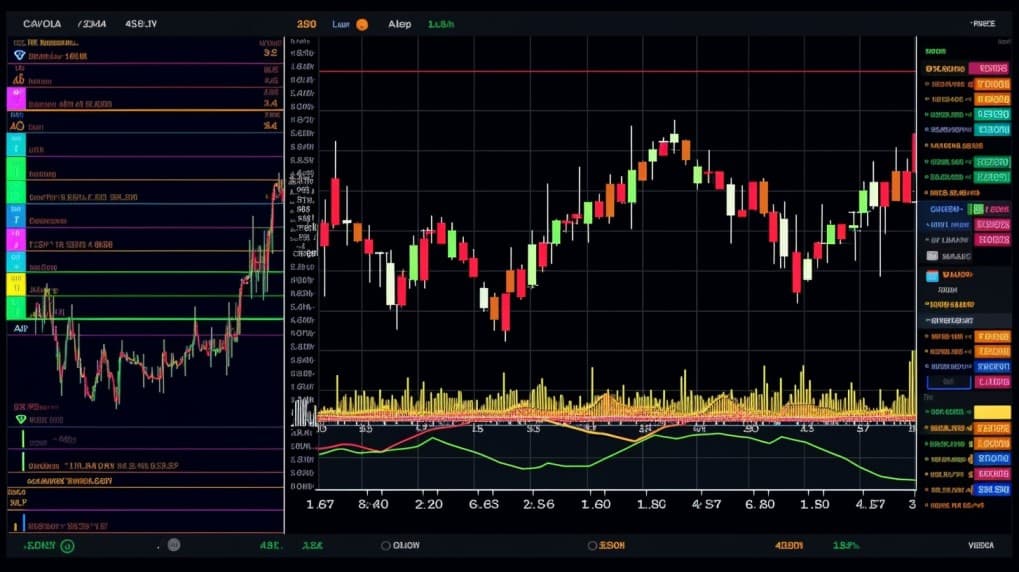
QQQ VS SMH
Exchange-Traded Funds (ETFs) have transformed the investment landscape, providing investors with easy access to diversified portfolios across various sectors and asset classes. In this article, we will conduct an in-depth analysis of two prominent ETFs: QQQ (Invesco QQQ Trust) and SMH (VanEck Vectors Semiconductor ETF). Through a detailed exploration of ETF tickers, full names, issuers, sectors, top holdings, capitalization, strategy, tracking, and exposure, we will uncover the distinct attributes of these two investment vehicles.
QQQ Vs SMH: Overview
The QQQ and SMH ETFs offer exposure to different sectors of the economy: technology and semiconductors, respectively. QQQ seeks to track the performance of the Nasdaq-100 Index, composed of 100 of the largest non-financial companies listed on the Nasdaq Stock Market. On the other hand, SMH aims to replicate the performance of the MVIS US Listed Semiconductor 25 Index, providing investors with a window into the semiconductor industry's growth potential and challenges.
QQQ Vs SMH: Sectors and Top Holdings
QQQ's portfolio is heavily weighted toward technology giants like Apple, Microsoft, Amazon, and Tesla, reflecting the Nasdaq-100 Index's focus on innovative companies. In contrast, SMH concentrates on semiconductor manufacturers and suppliers such as Taiwan Semiconductor Manufacturing Company (TSMC), NVIDIA, and Intel. By understanding the sectors and top holdings of these ETFs, investors can gauge their exposure to specific industries and companies.
 QQQ overlap QQQ VS SMH
QQQ overlap QQQ VS SMH
QQQ Vs SMH: Capitalization and Strategy
The QQQ ETF boasts a substantial asset under management (AUM) due to its popularity among investors seeking exposure to high-growth technology stocks. It follows a passive investment strategy, seeking to replicate the index's performance. Conversely, SMH pursues an active approach by targeting a specific industry with potential for innovation and growth. This difference in strategy translates into varying risk profiles and return expectations for investors.
QQQ Vs SMH: Tracking and Exposure
QQQ employs a replication strategy, investing in the same constituents as the Nasdaq-100 Index, with an aim to closely track its performance. In contrast, SMH tracks an index of semiconductor-related companies, providing investors with exposure to a niche sector within the broader technology industry. Understanding the tracking methodologies and exposure offered by these ETFs can aid investors in aligning their portfolios with their investment goals.
Conclusion
In conclusion, the QQQ and SMH ETFs represent distinctive investment opportunities, catering to different sectors and industries. For individuals seeking comprehensive insights into these ETFs' holdings, correlations, overlaps, and other valuable information, the ETF Insider app is an indispensable tool. With its user-friendly interface, this app empowers investors to make well-informed decisions about their investment strategies.
Disclaimer: This article is intended for informational purposes only and does not provide investment advisory services. It is important to conduct thorough research and consult with financial professionals before making any investment decisions.
Sources:
Invesco QQQ Trust: https://www.invesco.com/us/financial-products/etfs/holdings/qqq/
VanEck Vectors Semiconductor ETF: https://www.vaneck.com/etf/equity/smh/overview/
Nasdaq-100 Index: https://indexes.nasdaqomx.com/Index/Overview/NDX
MVIS US Listed Semiconductor 25 Index: https://www.mvis-indices.com/indices/overview/mvis-us-listed-semiconductor-25-index
QQQ quote and analysis
Discover the top holdings, correlations, and overlaps of ETFs using our visualization tool.
Our app allows you to build and track your portfolio.
To learn more about the QQQ Invesco QQQ Trust, access our dedicated page now.
FAQ
Why is QQQ better than SMH?
QQQ may be considered better than SMH for some investors due to its specific focus, offering diversification.
Does SMH beat QQQ?
SMH's performance relative to QQQ will vary over time, depending on market conditions.
Should I invest in QQQ or SMH?
The choice between QQQ and SMH should align with your investment goals, risk tolerance, and desired exposure.
Are QQQ and SMH good investments?
Both QQQ and SMH can be suitable investments depending on individual investment strategies, goals, and risk profiles.
What is the correlation between QQQ and SMH?
The correlation between QQQ and SMH can vary over time, reflecting differences in performance.